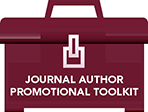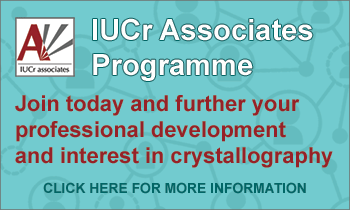publicising your article and increasing its impact

Before publication
Many potential readers will discover your article using an internet search engine such as Google, Google Scholar or PubMed. It is possible to optimize your article for search engines and thus ensure a high ranking in the search results. This will give your article higher visibility, helping to attract more readers and potentially increase citations.
Tips for search engine optimization:
Include keywords – choose appropriate keywords and phrases that define the content of your article, use at least four or five, think of specific phrases that a researcher might search on to find your article.
Title – use specific descriptive terms and include some of the keywords and phrases, try not to use abbreviations/acronyms/formulae.
Abstract – this should describe the context of the work, the findings and their wider significance; keywords and phrases should be included.
Authors – ensure everyone involved in the study is credited, as more authors generally means more citations.
Funding information and acknowledgements – include details of relevant grant agencies and institutions, as they may publicise the article too.
Another way of broadening the appeal of your article and attracting a wider audience is to write a lay summary; this helps to explain the significance of your research to a non-scientific audience. The lay summary can be posted on your own and/or your institution's web sites and shared via social media and also via Kudos (see below).
After publication
Present your article at conferences (note that powerpoint slides of your article are available from the IUCr Journals site). Exchange information about your published article with colleagues face to face.
Media relations. If your article is potentially newsworthy, then let us and your institutional and funders press offices know about it.
Social media. Share your article via social media platforms such as Twitter, LinkedIn, ResearchGate, Facebook etc.
Institutional web site. Update your research institute or faculty web site with details of your published article, including a link the article.
Email. Share links to your published article with colleagues via email.
Multimedia. Enrich your published article by uploading supporting videos and podcasts. This can help to broaden the appeal of your published work and aid understanding across different scientific disciplines.
Orcid iD. Provide an ORCiD iD during submission. This is a unique researcher identifier linking your name, research activities and articles, which can make your article more discoverable.
Open access
Open-access publishing, where no charge is made to the reader, offers many advantages to authors including higher visibility of publications and higher citation rates. Authors publishing in IUCr journals have the option to make their article open access, for an open-access fee.
The IUCr makes all open-access articles published in its journals immediately available on the IUCr Journals web site and in services such as PubMed Central, a public archive created by the National Center for Biotechnology Information of the National Library of Medicine, USA.
For more details of our gold open-access arrangements click here.
For more details on hybrid open access click here.
What the IUCr can do
As a scientific union with many commissions and links to regional and national crystallographic associations, the International Union of Crystallography is in a unique position to be able to publicise and promote articles published in its journals to the crystallographic community. In addition, there are many other ways in which the IUCr raises awareness of articles published in its journals, including, for example, targeted email alerts, press releases, and wide dissemination of its journals to aggregators and indexing organizations.
Abstracting and indexing services
The IUCr regularly uploads journal article metadata and content to many abstracting and indexing organisations.
Partnership with Wiley
The IUCr works in partnership with Wiley. IUCr journals are included in Wiley Online Library and marketed alongside other Wiley journal titles.
Wiley provides a promotion toolkit for authors. For further details, please click here or visit https://exchanges.wiley.com/authors/promo.
Kudos
Authors can use the free Kudos service to improve the visibility and impact of their research work. Kudos provides a platform:
for assembling or creating information (such as lay summaries or related multimedia) that helps readers filter the growing quantity of published research;
for sharing such information (for example, via social media or email) to increase discoverability; and
for measuring and monitoring the effect of both creating and sharing additional metadata and multimedia.
All lay summaries provided to Kudos are also made available on the IUCr Journals web site; there is also a Kudos showcase of articles from IUCr Journals. To find out more about Kudos, see https://journals.iucr.org/services/kudos.html.
Press releases and embargoes
IUCr Journals publish press releases and commentaries online (after embargoes have been lifted) for a selection of key articles in order to explain developments in crystallography and to leverage key research findings across related disciplines. Articles submitted to IUCr Journals should not be discussed with the media until the publication date.


 menu
menu




